Only 20 minutes to make tender, flaky salmon pesto pasta? Yes, it really is that easy! With just 5 minutes of prep and 15 minutes on the stove, you’ll have a creamy, flavorful salmon pesto pasta with blistered cherry tomatoes in a rich, basil pesto sauce. This simple yet elegant dish is perfect for weeknights or special occasions when you want a gourmet meal without the hassle
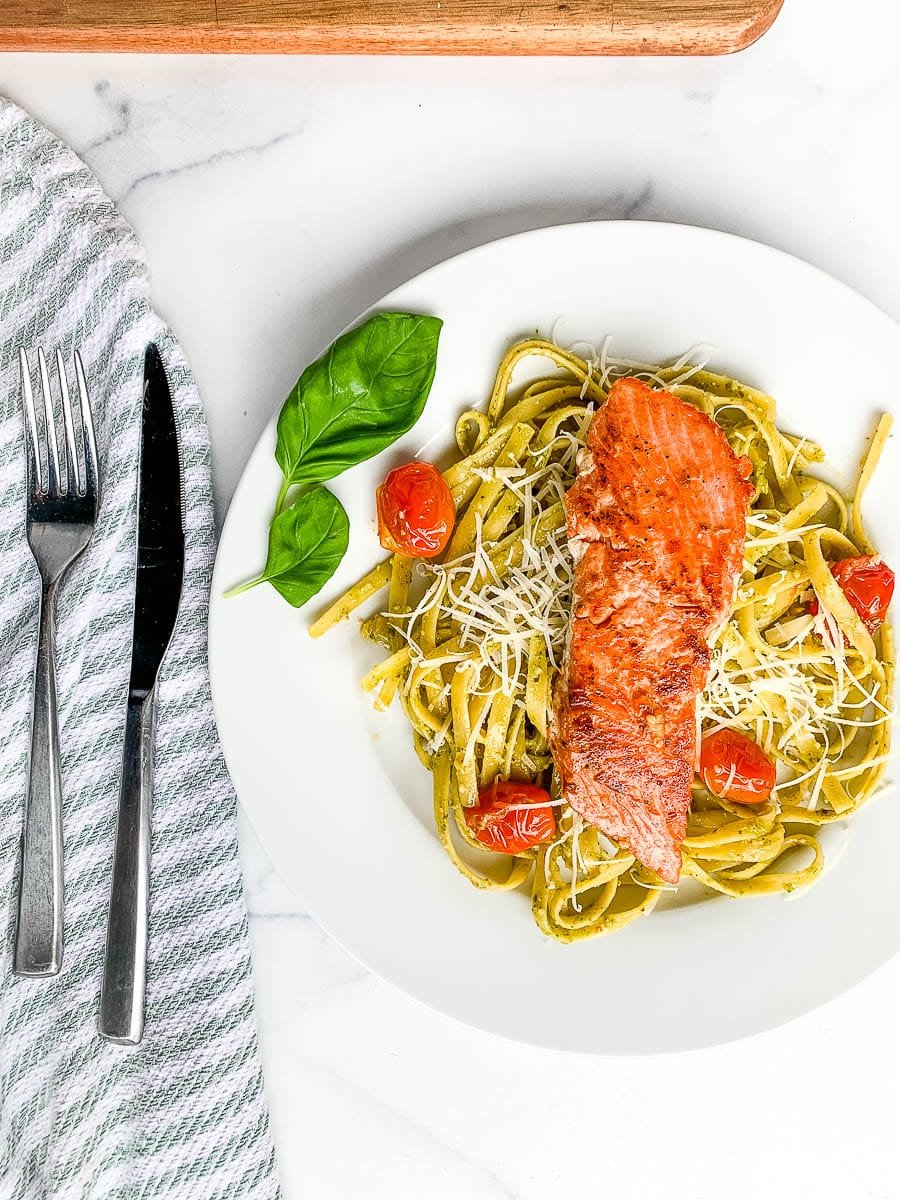
This pesto salmon pasta is the perfect combination of fresh, savory, and creamy flavors. The pesto and salmon pasta base is made by searing salmon to golden perfection, then tossing it with pasta in a smooth, herby basil pesto sauce.
One of the best things about this recipe is its versatility. You can use store-bought pesto for a quick meal, or make your own using fresh basil for a more vibrant flavor. For a lighter option, swap the creamy sauce for a simple olive oil drizzle.
Why We Love This Pesto Salmon Pasta Recipe
- It’s quick!
You could even season the fish and prepare the pasta ahead of time to make it even faster come meal time – though, honestly, this salmon pasta recipe is quick enough that it won’t even be necessary. - It’s the perfect balance of buttery fish and tangy sauce!
Salmon has a unique, strong flavor. The pesto brightens the plate perfectly, and the pops of juiciness from the blistered tomatoes break bites up with vibrant acidity. Plus this is the perfect addition to your spring dinner recipes! - It’s substitution-friendly – make this dish your own!
Swap around types of noodles, veggies, and even protein to make a meal that your family will love the most.
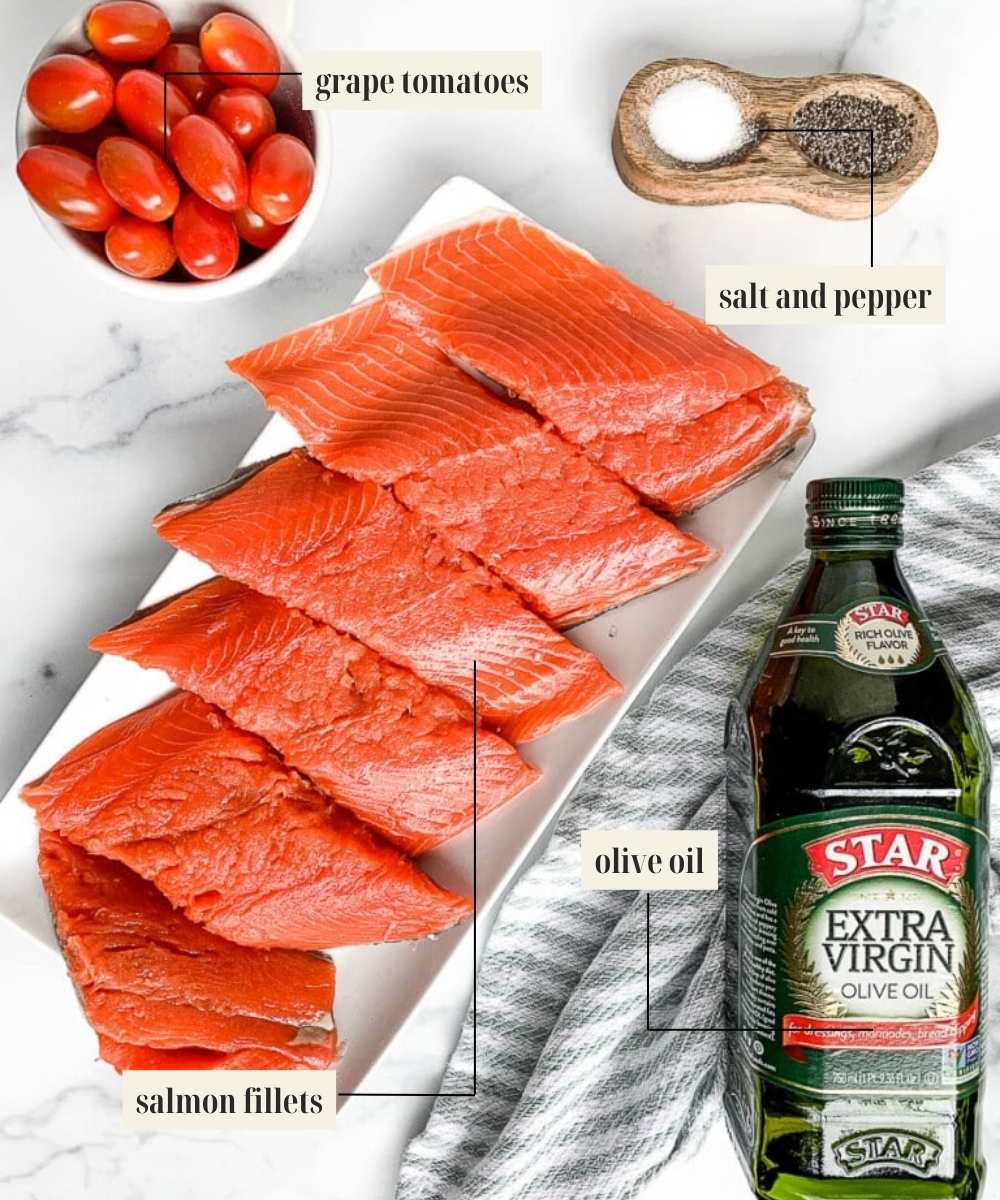
Ingredient Notes and Substitutions
- Salmon: Do your best to get filets of the same thickness so that you’re not flustered during the cooking process. Fish cooks quickly, and you don’t want to have to worry about burning anything!
- Pesto sauce: You can buy this ready-made right from the grocery store.
- Heavy cream or half & half: This is an optional ingredient for a creamy pesto sauce. Half & half is a good option if you want it just a tad creamy.
- Pasta: We recommend choosing a long, thin variety that can become totally coated in the sauce and scooped up in heaping forkfuls – it just makes for the best pasta experience!
Some of the best alternatives for salmon fettuccine are spaghetti, bucatini, linguine, tagliatelle, and capellini. I’d like to give a special mention to Pappardelle, which could also be great. However, because of its wide, thick shape, it is a bit difficult to coil on your fork.
🎯 TFN Pro Tip
If you want to slice your salmon, freeze the salmon before cutting it. Place the salmon fillet in the freezer for about 20-30 minutes until it firms up but is not completely frozen. This makes the fish easier to handle and enables you to achieve clean, even slices without the fish falling apart or becoming mushy.
Use a sharp, thin-bladed knife, preferably a fillet knife, to make precise cuts. Slice the salmon against the grain to ensure tender pieces that will cook evenly and blend seamlessly into your pasta dish.
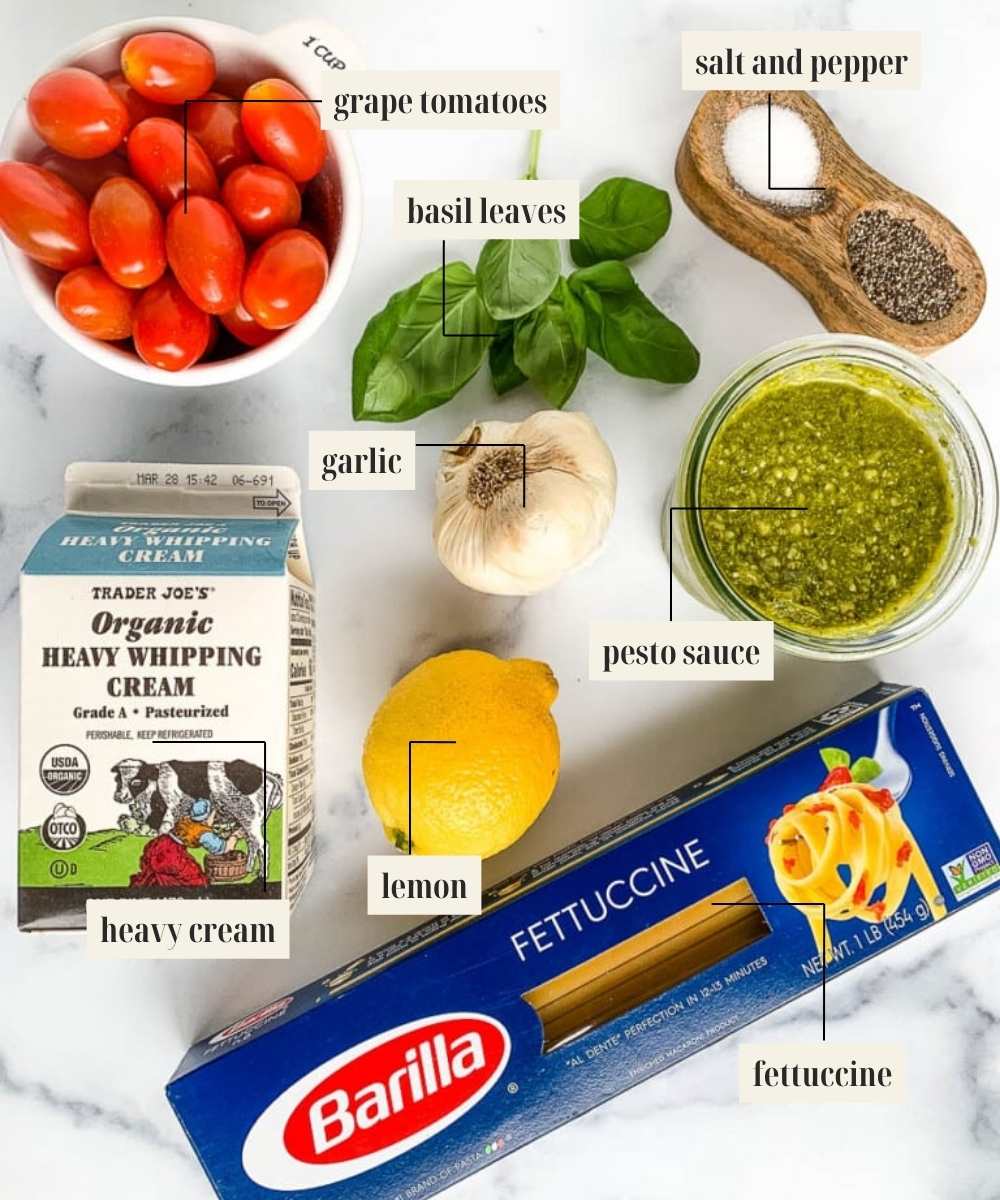
Recipe Variations
- Salmon alfredo pasta: Creamy alfredo or creamy bechamel cheese sauce can be used directly instead of the pesto in this salmon fettuccine recipe.
- Vegetarian pesto pasta: Pesto is delicious with a medley of veggies! In addition to tomatoes, try squash of all shapes and sizes, eggplant, and broccoli. Mushrooms are fantastic for maintaining a meaty texture as well.
- Use another fish: Flaky white cod, tilapia, halibut, and rockfish are other fantastic choices. Use what’s in season or what’s on sale… either way, it’s sure to be good!

How to Make Pesto and Salmon Pasta
- Reserve some pasta water for an extra flavorful sauce.
The salted pasta water already has additional flavor from preparing the fettuccine. Additionally, the starch left behind by the noodles will help to thicken the sauce, and sort of “glue” the contents of the salmon pesto pasta together. Win-win!
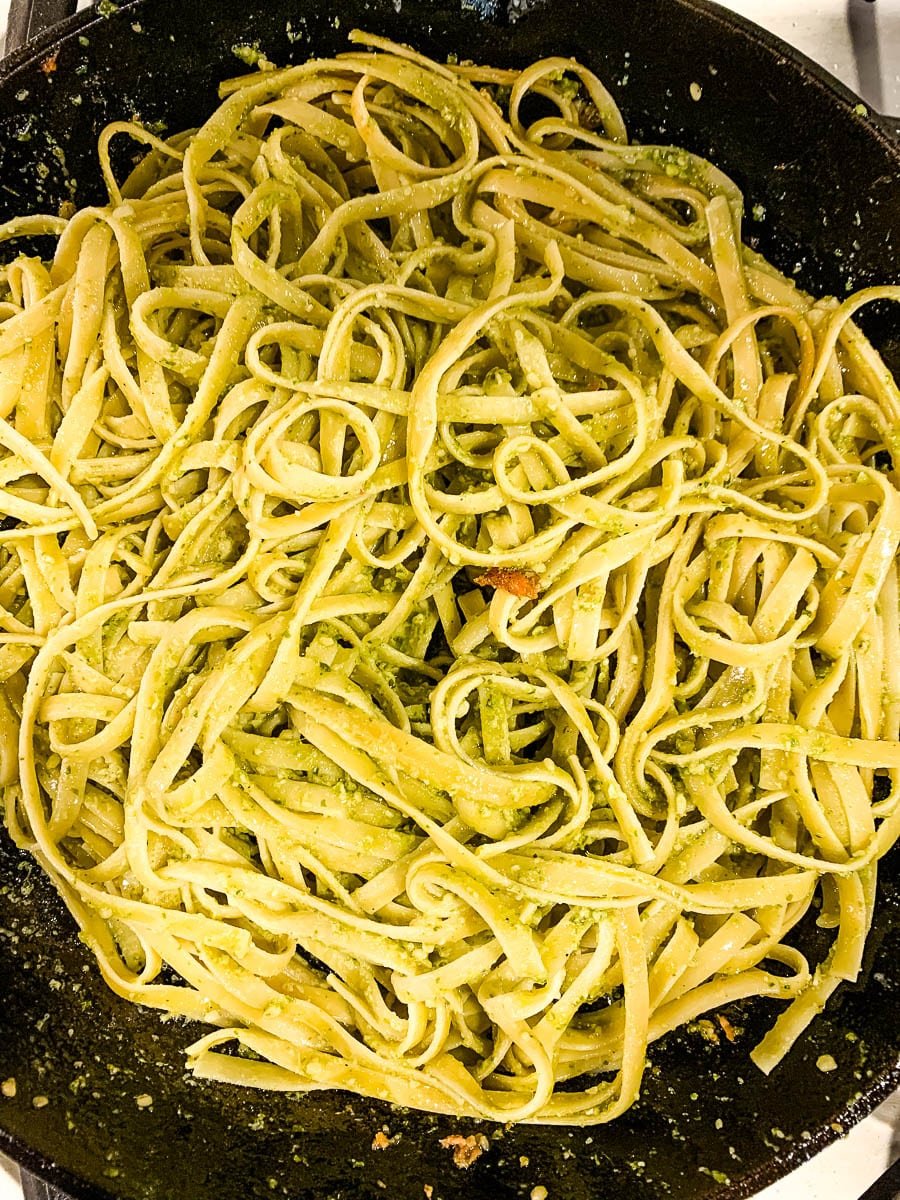
- Be sure the cooking oil is hot before adding the fish.
Waiting for the oil to come to temperature and “shimmer” is key to getting a delicious, beautiful sear on the salmon! This can take up to 5 minutes, so be patient.
Cooked-through fish will be opaque and flaky – the flesh should easily pull away with a fork. This is a pretty sure-fire test, but you can also go by the internal temperature. The safe internal temperature for salmon is 145° F.
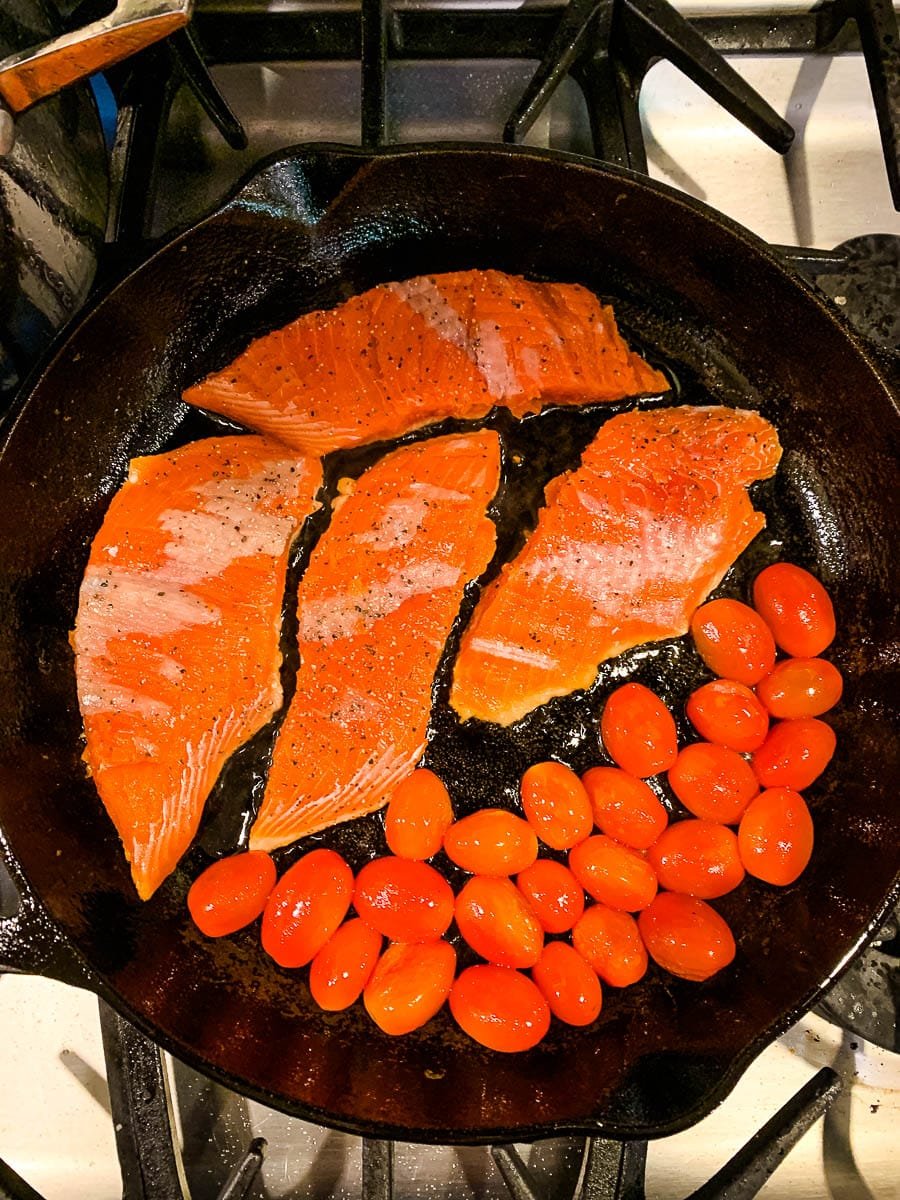
- Adjust the thickness and creaminess of the sauce.
The heavy cream in our pesto salmon recipe is optional. It definitely makes for a different flavor! It’s thicker, of course, with a slightly fatty, milky feel.
This is a pretty thick sauce in general! If it comes out too thick for your liking, just add more pasta water, a tablespoon at a time, until the consistency is the way you like it.
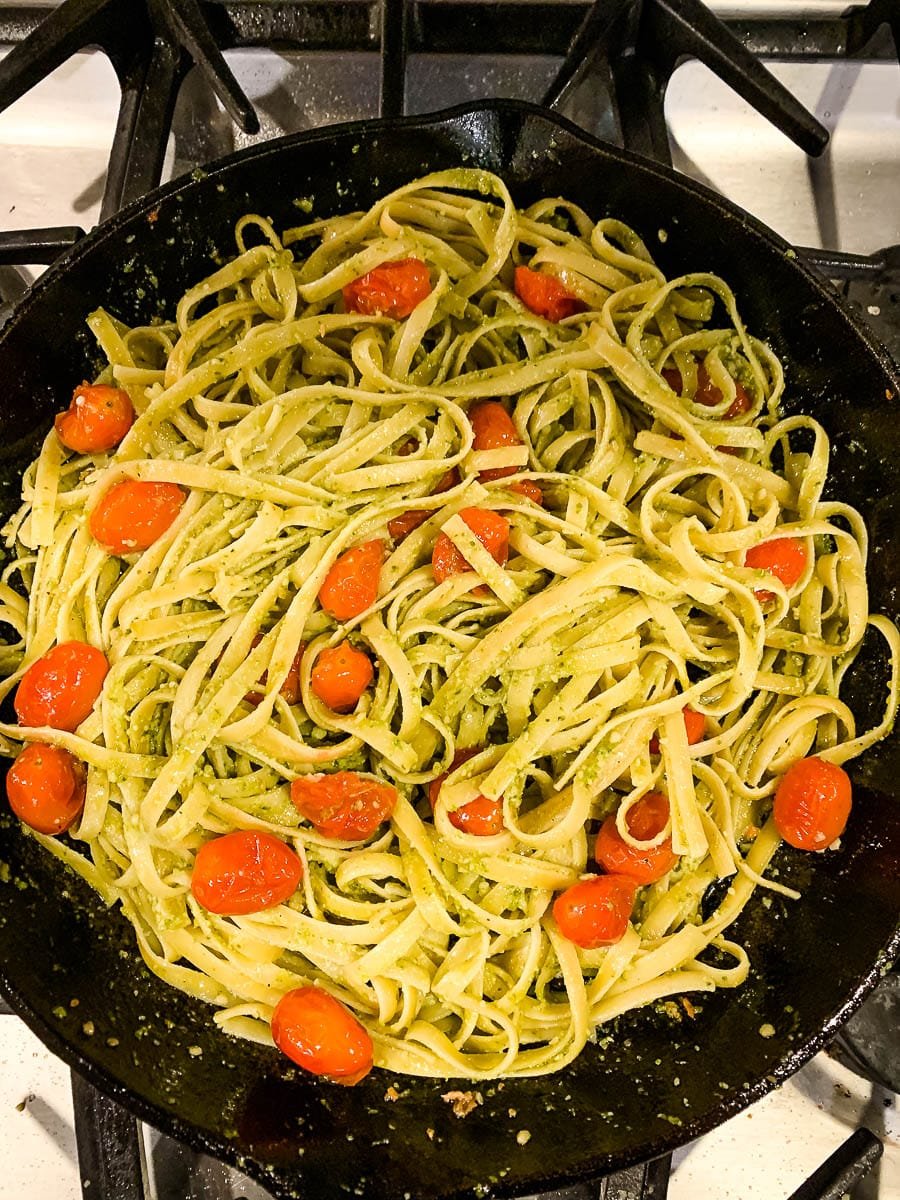
Serving Suggestions
This salmon pesto pasta is perfect for date nights, offering a rich and creamy flavor that feels both indulgent and elegant. Pair it with a salad or roasted asparagus for a fresh and balanced meal. Serve with warm garlic bread on the side to soak up every bit of the basil pesto sauce. To elevate the experience, enjoy it with a glass of crisp white wine. Looking for a final touch? A sprinkle of pine nuts and extra fresh basil on top makes this dish even more irresistible!
If you’re looking for more inspiration, explore our pasta recipes for Valentine’s Day, featuring heartwarming flavors and stunning presentations that are sure to impress!
Recipe FAQs
Salmon is a delicious, flavorful, and healthy protein that pairs well with pasta. Many other varieties of fish taste great with pesto, too! Other good choices are steak, chicken, and turkey.
It varies depending on the sauce’s contents. If the sauce is prepared with cream, the total calories per serving are 710. Without cream, the total calories per serving are 678.
Of course, this is with the exact ingredients that we use. Please note that the exact calorie count will depend on your ingredients when preparing salmon pasta at home!
Leftover salmon fettuccine can be stored in an airtight container storage for up to four days in the fridge. I absolutely love to have this meal for lunch the next day. The pasta soaks up the sauce even more, making it extra flavorful.
It’s tasty cold, but you can also safely reheat it in the microwave in short, 20 – to 30-second intervals, just medium heat. You may want to reheat the fish and pasta separately to avoid overcooking the fish.
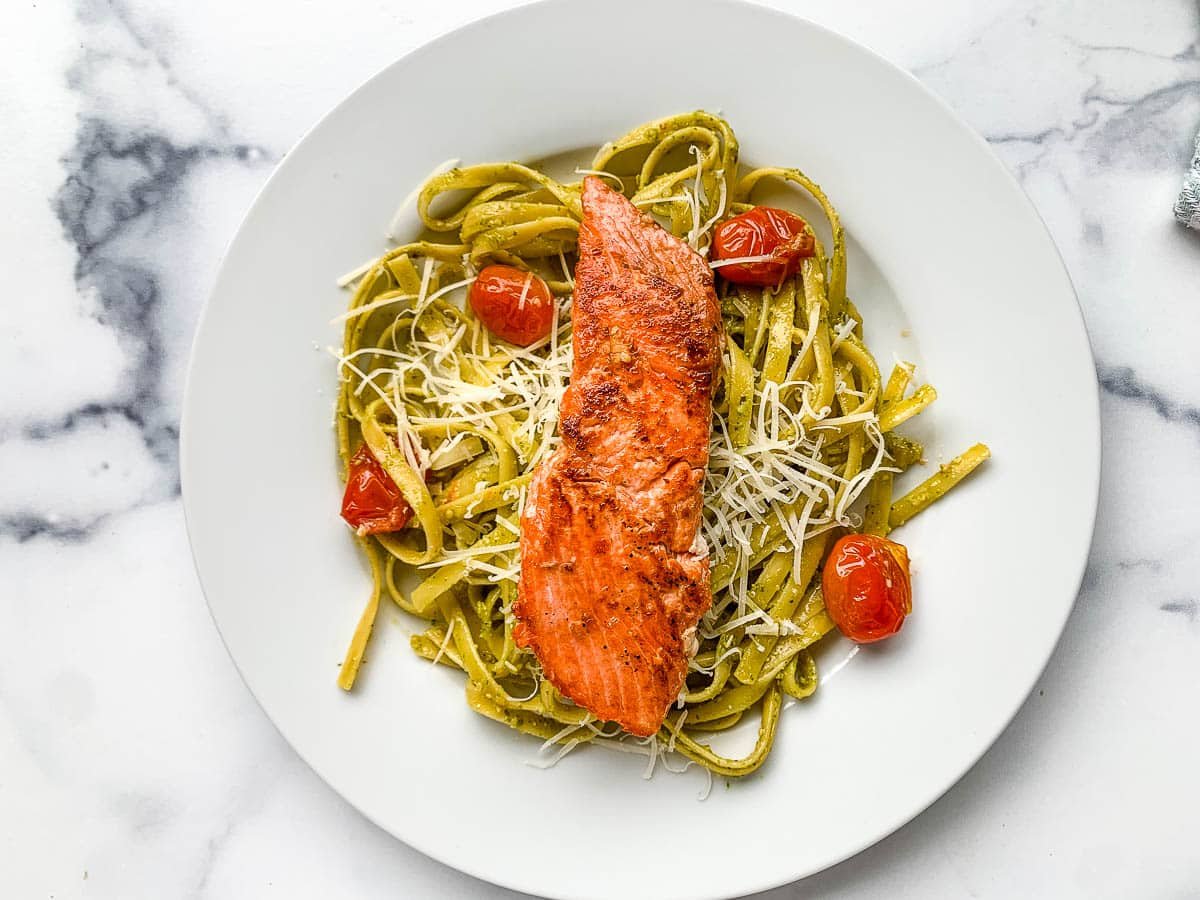
Need a few more 30 minute meals like this salmon pasta recipe?
If you tried this salmon pesto pasta recipe or any other recipe on my website, please leave a 🌟 star rating and let me know how it went in the 📝 comments below. Thanks for visiting!
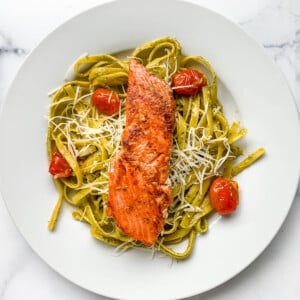
Salmon Pesto Pasta
Equipment
- stock pot - for cooking pasta
- colander
- skillet - or heavy bottomed stainless steel pan
Ingredients
- 1 ½ pounds salmon fillets six 4-ounce filets of same thickness
- ½ teaspoon kosher salt or more/less, to your taste
- ¼ teaspoon freshly ground black pepper or more/less, to your taste
- 1 pound uncooked fettuccine or other pasta of your choice
- 3 Tablespoons olive oil or avocado oil
- 1 cup grape tomatoes or other bite-sized tomatoes
- 1 clove garlic minced (1 teaspoon minced)
- ½ cup pesto sauce homemade or store bought
- 1 teaspoon fresh lemon juice
- ¼ cup heavy cream or Half & Half (optional, for a creamy pesto sauce)
For Serving
- ½ cup freshly shredded parmesan cheese or Romano cheese
- 6 large basil leaves finely chopped
Instructions
- Use salt and pepper to season both sides of salmon. Set aside.
- Bring a large pot of heavily salted water to a boil over medium-high heat. Add pasta and cook to al dente (about 2 minutes less than the cooking time shown on the package). When pasta is finished cooking, reserve 1/2 cup of the pasta cooking water, then drain the pasta in a colander and set aside.
- Meanwhile, heat oil in a large cast-iron (or other heavy bottomed skillet) over medium-high heat for 3 to 5 minutes, or until oil shimmers. This will help develop a good sear on the outside of the salmon. Add tomatoes to the shimmering oil; Let them cook, undisturbed, for 1 to 2 minutes, until the tomato skins begin to blister.
- Using a wooden spoon or heat-resistant spatula, move the tomatoes to the one side of the skillet. Arrange the salmon filets in the available space of the pan.Cook for 2 to 3 minutes, then use a spatula to flip the filets over, toss or stir the tomatoes, and continue cooking for another 2 minutes.Stir in minced garlic and cook for another 1 minute.
- Salmon should be seared on the outside and opaque and flaky inside. Add the salmon to a serving plate and cover it with foil. Transfer the blistered tomatoes to a bowl and set aside to add to the cooked pasta.Pour out any grease in the skillet and return the pan to the stove on low heat.
- Add pasta to skillet, along with pesto sauce and lemon juice, and stir to combine. For a creamy sauce, stir in optional heavy cream. Otherwise, slowly stir in half (1/4 cup) of the reserved pasta water.*If you prefer a thinner sauce, continue adding pasta water, a tablespoon at a time, until it's to your liking.Stir in the blistered tomatoes and toss gently to combine.
- Divide the pasta between 6 plates, sprinkle each with freshly shredded parmesan cheese, then place a salmon filet on top. Garnish with freshly chopped basil, if desired.
Notes
- Nutrition shown is for one serving, without cream in the sauce. If using cream, total calories per serving = 710, total fat = 34 grams, and saturated fat = 10 grams.
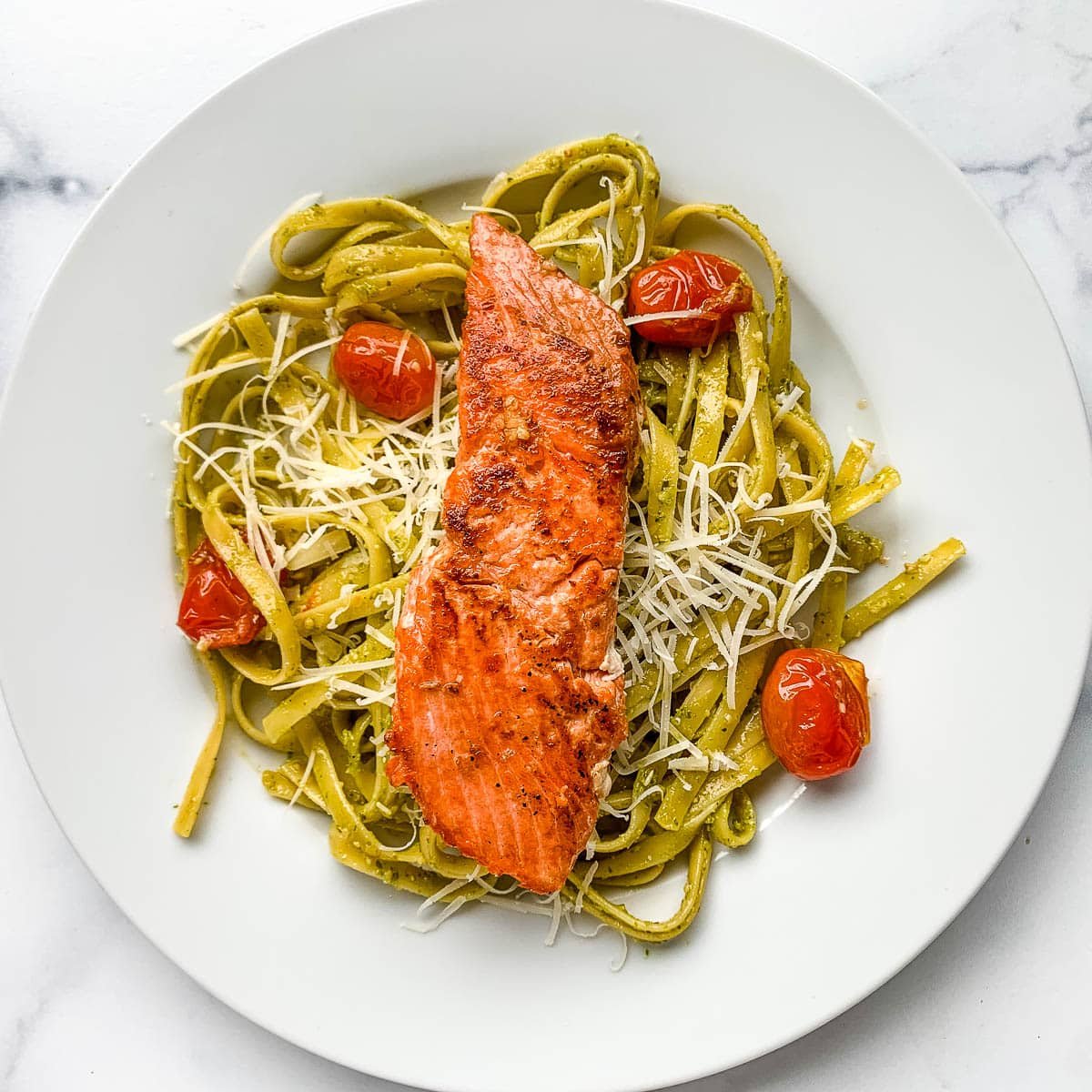

Paula says
This salmon dinner was absolutely fantastic. My whole family loved it!
Kristina Ann Allori says
I’ve been looking for different ways to make salmon and this recipe hit the spot! The whole family loved it.
Dina and Bruce says
This was an easy recipe that impressed our guests!
Ann says
Everything I love in one meal. I like making my own pesto special this time if year. Thanks!